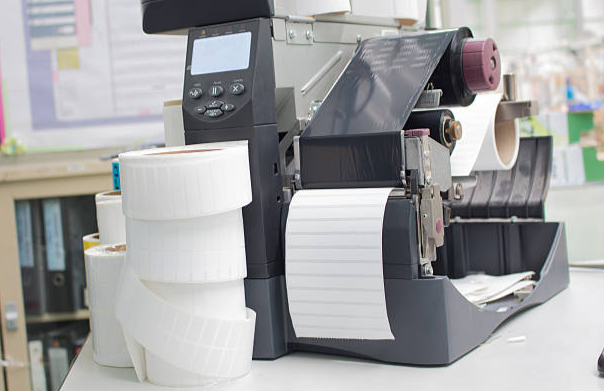As the excavation and construction industries keep developing, vacuum excavation emerges as a safer, eco-friendly, and ground-breaking approach to traditional excavation. Vacuum excavators deliver multiple advantages for moving and clearing debris or potholing and trenching. Vacuum excavation is also known as a traditional soft digging method, meaning that it’s non-destructive and minimises damage to underground infrastructure and utilities. Soft digging eliminates the need for hand digging or other mechanical procedures that boost labour expenses, mainly by relying on high-pressure water or air to dig. This solution contrasts with conventional excavators that need heavy gear and broad digging – processes that make digging more harmful and less precise.
Suppose you’re looking to level up your excavation operations. In that case, you can be assured of an efficient and safe outcome if you choose vacuum excavation and find a reliable business for vacuum excavator hire or sale – depending on your needs. Down below, we’re exploring the vacuum excavation process, looking into its applications, types, mechanics, best practices, and safety advantages. These insights will explain why vacuum excavation is becoming more and more sought-after across multiple industries.
Photo source: https://unsplash.com/photos/yellow-and-black-heavy-equipment-on-brown-rocky-hill-under-white-cloudy-sky-during-daytime-pX66y31DOIQ
How vacuum excavation works
The principle at the heart of this excavation method is easy to grasp—it’s the force of suction. This excavation type relies on a combination of high water or air pressure and a dedicated system created to safely dig and eliminate material. It’s just as unsophisticated as it’s effective.
First things first, a hole is drilled under the ground to serve as a channel through which air or high-pressure water is injected and loosens the soil. At the same time, a very powerful system attracts the debris and soil and sends it into a tank for material. The debris is then transferred to a specific disposal site, where its ditching must comply with local regulations.
Vacuum excavators guarantee control and precision, making them excellent for multiple uses. The typical system includes a debris tank, suction hoses, vacuum trucks, and numerous accessories.
The two types of technologies
There are mainly two tech models of vacuum excavators: air and hydro. Each has its own pros and cons.
Hydro
Hydro excavation uses pressurised water to disintegrate the soil. It is used in various cases where it can accurately spot and check buried utilities. This eliminates the risk of budget-wrecking slipups and guarantees workers’ safety.
For instance, this type of excavation is frequently employed during daylighting, a process that allows you to see underground utilities that would otherwise be impossible to spot. It’s non-invasive, which makes it particularly useful when dealing with fragile subterranean infrastructures since it reduces damage risks—air and water fuse to generate easily removable mud.
Air
Air excavation uses compressed air to force out the material from the ground. It’s popular for being swifter and more practical compared to traditional excavation, which justifies why it’s a first choice for projects that need to be finished ASAP. Moreover, it’s an eco-friendly option because it doesn’t disturb the soil as much as conventional methods, and decreases the likelihood of contamination that’s present in the traditional system.
Nevertheless, it’s safe to say that hydro is a bit more accurate than air excavation. The latter may not be the best option for projects where the withdrawn material needs to be protected and reused.
Various applications
The versatility brought by vacuum excavators makes them essential tools for multiple applications, such as:
- Utility location. Buried utilities like fibre optic cables, water mains, and gas lines make digging around them a bit more delicate. Vacuum excavation, however, is the right solution when precision is needed, being safe and non-destructive so that no accident can harm the infrastructure.
- Cable and pipe installation. Vacuum excavators are employed to ensure the existing or buried infrastructure isn’t damaged by creating trenches for cable and pipe installation. Thus, the surrounding sites suffer no damage, and no extra costs for potential error fixes need to be calculated.
- Construction. These excavators help excavate foundation holes, eliminate material, and smoothen out narrowed spots on construction sites. Those managing construction projects know how priceless equipment that’s versatile, flexible, and can work around challenging or confined sites is, so looking for a reliable vacuum excavator for sale makes a lot of sense.
- Digging in ice. Frozen ground is challenging to excavate. Fortunately, vacuum excavators simplify this task by injecting a stream of pressure and heated water to melt the ground’s surface, helping excavate rapidly with vacuum suction.
Safety is invaluable
The commitment to the environment and safety ranks among the strongest suits of soft digging. Even better, this method decreases the risk of destroying buried infrastructure and utilities. It’s more environmentally friendly in that it reduces the amount of dust generated, sucking in even the slightest particles. Plus, it needs less power and fewer on-site vehicles, further decreasing the impact on the environment.
Best practices
Before anything else, it’s essential to spot all the buried utilities to create a safe excavation strategy. You can begin by testing the ground and holes or contacting the public service office.
Then, you’ll need skilled and certified practitioners to ensure efficient troubleshooting and safe and correct gear manipulation.
Regular upkeep and audits help avoid possible breakdowns and assure you that the excavator works at its best and passes the test of time. By spotting and tackling possible problems early, you slash downtime and safety risks and improve job site productivity.
Endnote
Vacuum excavation has become the preferred method for safe, efficient, and eco-friendly digging across various industries. By minimising the risk of damaging underground infrastructure and reducing the environmental impact, this non-destructive technology offers many advantages over traditional excavation methods. Whether using hydro or air systems, vacuum excavators provide a lot of precision, flexibility, and reliability.
The demand for safer and more sustainable construction practices grows, so considering using vacuum excavation equipment for your next project is a smart choice, all the more if you’re looking for solutions for your forward-thinking businesses.









